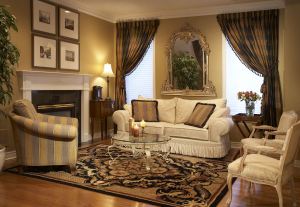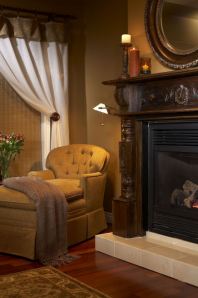People who have never worked with a decorator, or who have had a bad experience with a decorator, have interesting ideas about how decorators work with their clients. Many wonder whether they will like working with a decorator. I’ve written an article on “What makes a good decorator”, and now I’m going to turn the tables and talk about the clients. After all, it’s the personal interactions that determine how successful a decorator/client relationship will be. Based on my observations of my own clients, and how we’ve worked together, here are my insights on what qualities make a good decorating client:
- Trust is a must. You’ve hired a design consultant for her ability to visualize and create what you can’t. After all the discussions and sketches and photos and swatches, there will come a point where you simply have to trust that your decorator will make it all come to life the way you pictured it — or even better! Ask all the questions you want, just as you would of a surgeon or a builder, but ultimately you won’t really know how it’s going to turn out until it’s done. If you can’t make a decision on faith, then you may not be a good candidate to work with a decorator.
- Talk isn’t cheap — it’s priceless. Be sure to give your decorator feedback on her selections and ideas. As they say at the altar, “Speak now or forever hold your peace.” Decorating a room or a home is a collaborative effort with back and forth discussion. It’s this discussion that often leads to the best outcomes.
- Keep an open mind. You’ve hired someone creative to help you complete a project that you couldn’t — or didn’t want to — do on your own. Be open to new ideas. A decorator’s job, in my opinion, is to push you a little bit outside of your comfort zone. If all they do is agree to all of your ideas, then you don’t need them, do you? That’s not to say that you can’t ultimately say ‘no’ to an idea, but at least give it a chance.
- Honesty is a virtue — especially when it comes to your budget. Don’t imply that you are willing to spend more than you are able, just to make the project sound more important. Likewise, don’t give a low-ball budget because you are concerned that your decorator will spend whatever you give her. The reality is, that most people underestimate how much is needed to decorate their homes, due to lack of experience. It is a constant struggle to work within the budget on most projects. If you aren’t honest about your budget, you will waste your own time as well as your decorator’s, and you will miss out on solutions that might have been perfect.
- Know thyself. If you can’t explain what you like and dislike, then it will be very difficult for a decorator to meet your needs. When you give feedback on a selection, be sure to explain why you like or dislike something, as best you can. It is not good enough to say “I’ll know it when I see it.” Your decorator’s job is to narrow the selections to those that best meet your needs, and not to show you every possible choice. Look at decorating books and magazines, and gather pictures of rooms that you like, even if you can’t explain why you like them. You have a responsibility to help the decorator understand your likes and dislikes; it is unrealistic to expect mind-reading from your decorator. (Although many of us have become quite adept at it!)
- Two’s company, three’s a crowd. Okay, we can make an exception for your immediate family, but that’s it. If you hire someone to give you advice on your decorating, you need to stop asking all your friends, neighbours and relatives to offer a second opinion. If you wanted them to decorate your home, you would have asked them, wouldn’t you? Many amateur decorators have trouble offering advice based on what you like, and not on their own likes and dislikes. The same could be said of some of your immediate family; our children don’t always consider our tastes when they offer opinions. You will only confuse yourself if you start getting input from everyone. If you are tempted to do this, ask yourself why you are doubting your choices, or the decorator’s choices. Be sure to make your decorator aware of your underlying concerns, so she can talk through them with you.
- Laughter is the best medicine. In decorating, as in everything, it helps to have a sense of humour about it all. When things aren’t going quite the way you expected, try to see the humour. To paraphrase Tom Hanks in League of Their Own, ‘There’s no crying in decorating!’ If you’re finding yourself getting too stressed, please remember that — thankfully — this isn’t brain surgery. No one ever died from decorating.
Hopefully, these insights will help you to set the groundwork for a successful decorating partnership on your next project.








